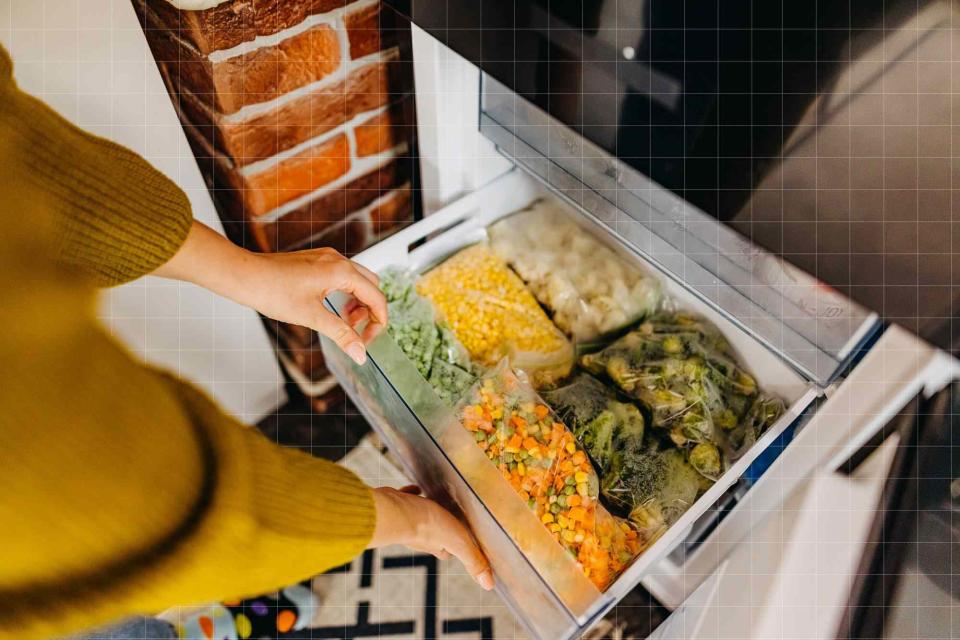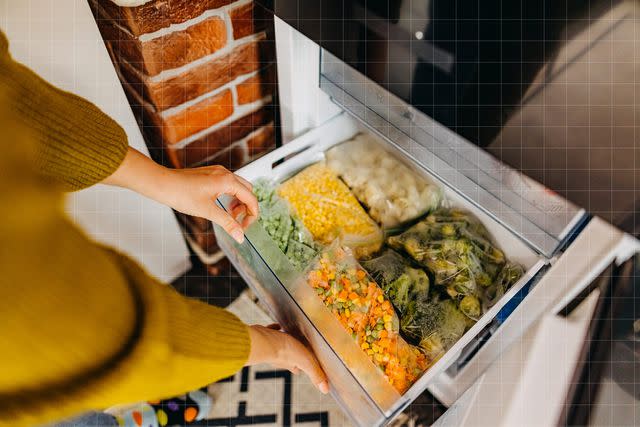10 Freezer Mistakes You're Probably Making
These common mistakes could lead to food waste, foodborne illness and more. Learn how to solve them so you can make the most of your freezer.

I used to believe that your freezer was connected to your fridge, full stop. Then I married a man from Kentucky, and part of his dowry was a giant chest freezer that came to live in our basement. Suddenly, a whole new world opened up to me. No longer hampered by my previously limited amount of freezer space, I could go all-in on saving scraps for stock, and then storing said stock by the quartful. Summer fruit could be saved for midwinter pies, cookie dough could be batched in double or triple lots, frozen orbs just waiting for fresh baking. Paired with my vacuum sealer, a special on a favorite cut of meat could be indulged at scale, as could fickle baking ingredients like delicate nuts and flours. Meal prep for Thanksgiving could safely begin in September or October.
But there are also lessons to be learned when you begin to really lean into freezing. While it is a terrific preservation tool, it is not a magic cryogenic machine, and frozen foods are not forever. It is always devastating to unearth a roast that has succumbed to freezer burn, or a forgotten baked treat now rendered sad and inedible by endless months in the chill chest. There is no money to be saved in bulk purchases if you eventually have to throw the product away due to poor management.
Here are the top 10 mistakes we can all make and should try to avoid when using the freezer.
Related: 5 Risky Refrigerator Mistakes You're Probably Making—Plus, What to Do About Them
Mistake #1: You're Not Sealing Things Properly
A freezer is only as good as how your food is prepped. Vacuum sealers are the best for eliminating oxygen and spaces for freezer burn to take hold. If you don't have one, wrapping in plastic wrap first, then foil, then stashing in a freezer bag is the best way to preserve.
Mistake #2: You Freeze Foods That Shouldn't Be Frozen
Raw delicate vegetables like lettuce, cucumber and zucchini will all suffer in the freezer. The high water content means that the cells of these vegetables will burst, and when you thaw them, you'll have a soggy mess that is not really good for much. Other ingredients that should stay out of the freezer include soft cheese and raw eggs, which can explode. For more foods that are not good to freeze, check out the National Center for Food Preservation.
Mistake #3: Your Freezer Is Not Set at the Proper Temperature
If you want your freezer to store your food properly, you want to be sure it is set to the correct temperature. Most freezers will have a preset temp setting of 0°F, which is the optimal temperature for freezing foods, according to the Department of Agriculture. A fluctuation between 1°F and -1°F is safe, but for best results, err on the colder side.

Mistake #4: You Don't Go Through Your Freezer Regularly
You should do a twice-yearly cleanout of your freezer to ensure that you are using your foods while they are still in their best condition. Generally speaking, as long as they are properly prepped, wrapped and sealed, you should be able to safely store fruits and vegetables and baking ingredients for 8 to 12 months, poultry for 6 to 9 months, fish for 3 to 6 months, ground meats for 3 to 4 months, cured meats for 1 to 2 months and prepared foods or commercial frozen products for 1 to 2 months. By doing a regular cleanout, you can avoid food waste and use up anything that's getting toward the end of its best-by date.
Mistake #5: You're Not Labeling & Organizing Items
It's way too easy to forget what's in containers in your freezer, so be sure to label and date everything you store to help you know when to use them, as well as know when it's time to purge things. If possible, use the FIFO system (first in/first out) to organize your freezer. Whenever you add something new, put it behind or underneath an older identical or similar item. This way, you'll use the oldest items first when you go looking for food. If you have the space, use freezer bins to help organize your freezer so that you can find items easily.
Mistake #6: You Put Hot Things in the Freezer
The key to food safety is proper temperature. Food should be cooled to room temp, then, if possible, cooled completely in the refrigerator before it's placed in the freezer. Putting warm or hot food into your freezer can raise the temperature of your freezer and potentially damage other foods, not to mention create potentially unsafe temperatures for bacteria growth.
Mistake #7: You Don't Individually Quick-Freeze Items Before Freezing
There's nothing worse than making a triple batch of cookie dough, only to find all those lovely balls stuck together in the package. Or opening a container to find a solid brick of meatballs. Individually freezing these items is key to having them work for you once frozen. Put your items on a parchment- or foil-lined sheet pan with space between them, and freeze uncovered until frozen solid before transferring to a freezer bag or container. The items will stay separated, and become much easier to use straight from frozen. This works well for slices of cake or other baked goods as well.
Mistake #8: You Defrost Things at Room Temperature
If your food item cannot be cooked or prepared straight from frozen, it's best to thaw it overnight in the fridge to keep it in the safe temperature zone. Food needs to be between 0°F and 40°F to be safe. If you need a protein thawed quickly, the USDA suggests thawing it in cold water or in the microwave. For the cold-water method, place food in a zip-top bag and immerse it in cold water. Change the water every 30 minutes until the food is thawed. For the microwave method, defrost in 1- minute intervals until thawed. If using either of these methods, plan to cook the food immediately.
Related: Can You Refreeze Ground Beef?
Mistake #9: You Open the Freezer During a Power Outage
If the power goes out, DON'T OPEN THAT DOOR! The door of your freezer has a serious seal, and everything inside is frozen, so even with no power, your food can remain at safe temperatures for up to two days as long as you don't let ambient air inside. If your power is restored within 24 hours, you should be totally fine. If your power is out for 24 to 48 hours, the food will be safe to consume as long as it is still 40°F or below, but should not be refrozen. If you have issues with power, it can be good to invest in a sensor system that sends an alert to your phone if the freezer goes out of temperature range.
Related: How to Know If Frozen Food Is Safe to Eat After Losing Power
Mistake #10: Your Freezer Is Too Full—or Too Empty
Your freezer will work best if it is well-stocked, but not crammed. It is important for cold air to be able to get around your stored items, but you do not want large sections of empty space. If your freezer is too full, take a couple of weeks and attempt to cook and eat out of your freezer to free up some space. If it is too empty, use bags of ice to fill in the gaps until you have foodstuffs to store.
Once you learn how to best use your freezer, you will find it to be an invaluable tool for your cooking practice. From helping save money and preventing food waste to making entertaining a breeze, your freezer will have your back.

